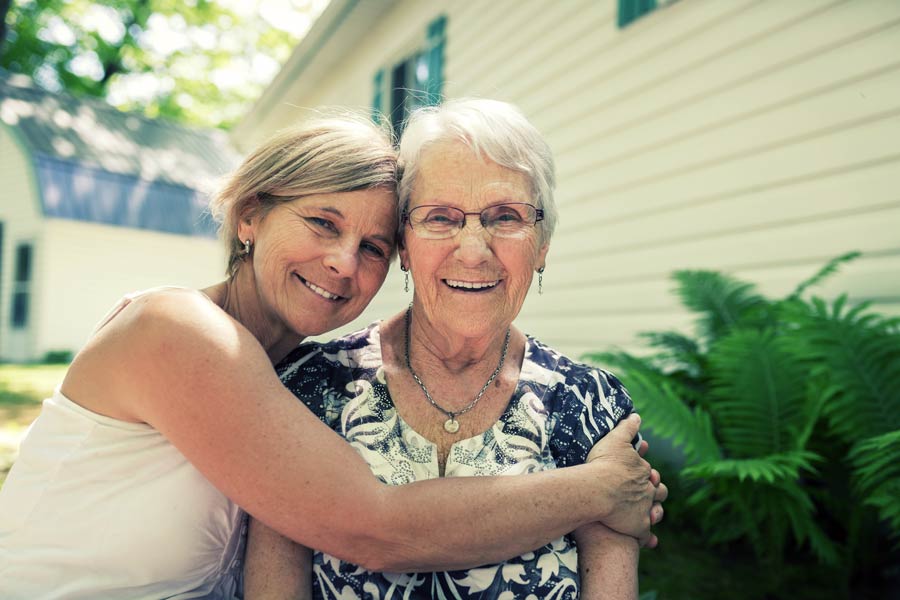Caregiver Training
Welcome to our Caregiver Training section. Caregiving can be challenging. On this page you will find educational guides arranged by topic. Our team is always available to help you feel more comfortable in your role. These additional resources are designed to empower and assist you in caring for your loved one.
Remember, we’re here for you.

Restlessness
- Managing Restlessness
This instruction sheet identifies signs of restlessness, discusses what can be done to manage it and what information you need to report to your hospice care team.
Trouble Breathing
- Managing Trouble Breathing
This instruction sheet defines shortness of breath, identifies when you should seek advice about it, and discusses what can be done to manage shortness of breath.
Fatigue
- Managing Fatigue
This instructional sheet explains fatigue, identifies signs and symptoms, discusses what can be done to manage fatigue, and what you need to report to your hospice care team.
Pain
- Managing Pain
This instructional sheet provides information about pain, discusses what can be done to manage pain, and what you need to report to your hospice care team.
- Recognizing Pain in Non-Verbal Patients
This instruction sheet provides information about recognizing signs someone may be in pain when they are unable to communicate verbally.
- Dispelling Myths of Opioids
This instruction sheet provides information about opioids and myths surrounding its use.
Constipation
- Managing Constipation
This instructional sheet explains constipation, what can be done for it, and what you should report to your hospice care team.
- Managing Constipation by Opioids
This instructional sheet provides information about the signs and symptoms of constipation, discusses what can be done for constipation due to opioids, and what you need to report to your hospice care team.
- Tips for Constipation
This instruction sheet defines constipation, identifies the signs and symptoms, and provides information about prevention and treatment options.
Incontinence – Bladder and Bowel
- Managing Bladder Incontinence
This instructional sheet explains bladder incontinence, discusses what can be done to control it and what can be done to prevent odor and skin irritation, as well as what you need to discuss with your hospice care team about bladder incontinence.
- Managing Bowel Incontinence
This instructional sheet explains bowel incontinence, identifies signs and symptoms, discusses what can be done for bowel incontinence, and what you should report to your hospice care team.
Nausea and Vomiting
- Managing Nausea and Vomiting
This instructional sheet provides information about what can be done for nausea and vomiting, and what you should report to your hospice care team.
Skin Care
- Skin Care
This instruction sheets explains why skin care is important, how you can keep skin healthy, discusses what can be done to prevent damage, and what you should to report to your care team about skin issues.
Edema (Swelling)
- Tips for Edema “swelling”
This instructions sheet provides information about what causes edema, identifies signs and symptoms, discusses what to do to prevent and treat it, and what information you need to report to the hospice care team.
Nutrition and Fluids
- Food and Fluid Issues
This information sheet defines nutrition and hydration, discusses things you can do to help, and what you need to report to your hospice care team.
Seizures
- Seizures
This instruction sheets defines seizures, identifies signs and symptoms of seizures, discusses what can be done for the person having the seizure and what information you need to report to your hospice care team.
Bleeding
- Preparing for Bleeding (English)
This instructional sheet provides information about what causes bleeding at end of life, identifies signs of bleeding, discusses what can be done for bleeding, and what you need to report to your hospice care team.
Distress and Anxiety
- Managing Anxiety
This instructional sheet provides information about the symptoms of anxiety, discusses what can be done to manage it, and what you need to report to your hospice care team.
- Psychological Distress
This instructional sheet defines psychological distress, identifies signs and symptoms of psychological distress, discusses what can be done to reduce distress, and what to report to your hospice care team.
- Spiritual Distress
This instruction sheets explain spiritual distress, identifies signs and symptoms, discusses what can be done to manage spiritual distress, and what you need to report to your hospice care team.
Dying Process and Communicating with Loved One
- Final Days
This instructional sheet provides information about the signs that a person is near death, discusses what can be done to relieve symptoms and provide comfort, and what you need to report to your hospice care team.
- Tips Talking with Someone Who’s Dying
This instructional sheet provides information about talking with someone who is dying to provide emotional support.
HIV/Aids
- HIV/AIDS
This instructional sheet defines HIV/AIDS, shares signs and symptoms of the disease, what can be done, and what you need to report to your hospice care team.
Dementia
- Dementia
This instructional sheet provides information about dementia, identifies signs and symptoms, and what you need to report to the hospice care team.
- Tips for Dementia
This instruction sheet outlines signs and symptoms of dementia, discusses what you can do and how you can support the family.
Grief and Mourning — Adults and Children
- Grief and Mourning Adults
This information sheet provides information about grief and mourning, discusses what can be expected and what can be done to help the healing process, and when to seek help for grief and mourning.
- Preparing Children (3-5) for Death of Loved One
This instructional sheet provides information about how death affects children, signs and symptoms of grieving/mourning in children, what to do to help a preschool child (ages 3-5) feel secure, visiting the dying and attending funerals, and what to report to your hospice care team.
- Preparing Children (6-9) for Death of Loved One
This instructional sheet provides information about how death affects children, signs and symptoms of grieving/mourning in children, what to do to help school-aged children (ages 6-9) feel secure, visiting the dying and attending funerals, and what to report to your hospice care team.
- Preparing Children (10+) for Death of Loved One
This instructional sheet provides information about how death affects children, signs and symptoms of grieving/mourning in children, what to do to help pre-teens and teens (ages 10 and above) feel secure, visiting the dying and attending funerals, and what to report to your hospice care team.
- Preparing Infants & Toddlers for Death of Loved One
This instructional sheet provides information about how death affects children, signs and symptoms of grieving/mourning in children, what to do to help an infant or toddler feel secure, visiting the dying and attending funerals, and what to report to your hospice care team.
Comparison of Care Types
- Comparison of Care Types
This instruction sheet presents a side-by-side comparison of Home Care, Home Palliative Care, and Home Hospice Care to help identify which services are covered by what type of insurance.
Hospice and Palliative Care
- Hospice and Palliative Care
This instructional sheet defines hospice and palliative care and what these care teams do.
- Hospice Care in Nursing Homes
This instructional sheet defines the role of hospice care for those residing in a nursing home, discusses what services are provided, and how care is paid for.

